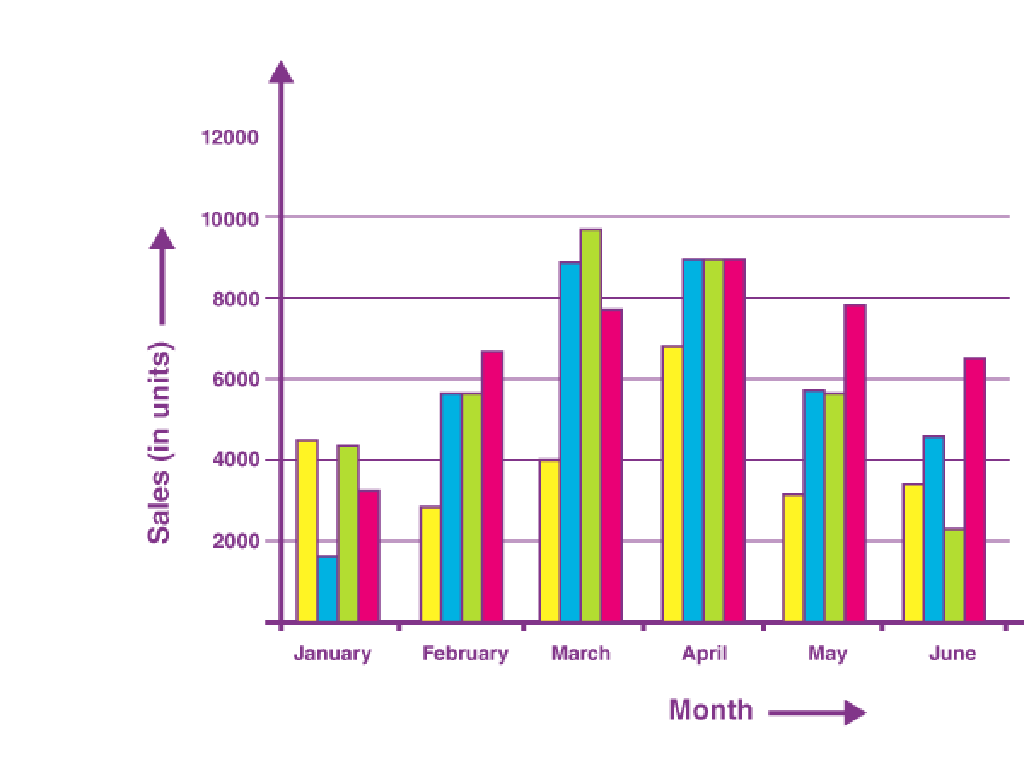Add And Subtract Integers Using Counters
Subject: Math
Grade: Eighth grade
Topic: Integers
Please LOG IN to download the presentation. Access is available to registered users only.
View More Content
Welcome to Integers!
– Understanding Integers
– Define integers
– Integers include whole numbers and their negatives
– Real-life positive & negative examples
– E.g., Elevation: -5m below sea level, Temperature: 23°C above zero
– Using counters for addition & subtraction
– Counters can represent numbers for visual math operations
|
This slide introduces the concept of integers to eighth-grade students. Begin by explaining that integers are a set of numbers that include all whole numbers, both positive and negative, as well as zero. Provide relatable examples of positive and negative integers, such as temperatures above and below zero or elevations above and below sea level. Emphasize the use of counters as a visual and tactile method to help students understand and perform addition and subtraction with integers. This will set the foundation for more complex operations with integers and help students visualize mathematical concepts.
Understanding Integers with Counters
– Counters as a math tool
– Visual aids for adding/subtracting
– Positive vs. Negative Counters
– Positive (red) and negative (blue) for balance
– Counters represent real numbers
– Each counter equals one unit
– Counters simplify calculations
– Use counters to add/subtract easily
|
Counters are tangible objects used to represent integers and help students visualize mathematical operations. Positive counters can be red, and negative counters can be blue, which allows students to easily distinguish between them and understand the concept of balance in equations. By assigning each counter a value of one, students can model real numbers and perform addition and subtraction by physically manipulating the counters. This hands-on approach simplifies the process of calculating with integers and aids in developing a deeper understanding of the concepts. Encourage students to practice with different sets of counters to become comfortable with the method.
Adding Integers with Counters
– Rules for adding integers
– Use counters to represent positive and negative numbers
– Example: Positive + Negative
– E.g., 4 (+counters) + (-3 counters) = 1 (+counter)
– Group activity with counters
– Groups will use counters to practice adding integers
– Discuss activity outcomes
– Share different methods and results
|
This slide introduces the concept of adding integers using counters, which are physical or visual representations of positive and negative numbers. Start by explaining the rules for adding integers, such as ‘same signs add and keep, different signs subtract.’ Use an example to illustrate adding a positive and a negative integer together. For the group activity, provide each group with a set of counters and a series of integer addition problems to solve. After the activity, discuss the different strategies students used and the outcomes they achieved. This hands-on approach helps students visualize and understand the abstract concept of adding integers.
Subtracting Integers with Counters
– ‘Taking away’ in subtraction
– Subtraction can mean removing items from a group.
– Subtract negative from positive
– Example: 5 – (-3) means adding 3 to 5, because subtracting a negative is like adding a positive.
– Class practice with counters
– Use counters to visually subtract integers, reinforcing the concept of ‘taking away’.
|
This slide introduces the concept of subtraction as ‘taking away’ and applies it to subtracting integers, specifically how to subtract a negative number from a positive one. Begin by explaining subtraction with counters as a visual aid. For example, to subtract -3 from 5, students will add 3 positive counters to the 5 already present. During class practice, provide students with physical or virtual counters to work through problems. Encourage them to think of subtraction as removing negative counters, which actually adds to the total count. This hands-on activity will help solidify their understanding of integer operations. Prepare several examples of different integer subtractions for the class to try.
Real-World Integer Operations
– Apply integers to real-world problems
– Example: Temperature changes
– If the temperature drops from 15°C to -5°C, what’s the change?
– Discuss everyday integer use
– Think of situations involving debts, floors in a building, etc.
– Share personal scenarios
|
This slide aims to help students connect the abstract concept of adding and subtracting integers with practical, real-life situations. Start with a relatable example, such as temperature changes, to demonstrate how integers are used in daily life. Encourage students to think about and discuss scenarios where they encounter integer operations, like keeping score in games, measuring elevations, or managing finances. The goal is to foster a deeper understanding of integers by recognizing their presence and application in everyday contexts. Have students share personal experiences or scenarios where they’ve used integer operations to solidify their grasp of the concept.
Class Activity: Integer Operations Challenge
– Pair up and solve integer problems
– Use counters for visualization
– Counters represent positive and negative values
– Present solutions to the class
– Explain the reasoning behind answers
– Share your thought process and steps taken
|
This activity is designed to promote collaborative learning and hands-on experience with integer operations. Students should work in pairs to encourage discussion and problem-solving strategies. Using counters will help them visualize the addition and subtraction of positive and negative integers, making abstract concepts more concrete. After solving the problems, each pair will present their solutions to the class, explaining the reasoning behind their answers. This will reinforce their understanding and communication skills. Possible activities: 1) Adding integers with the same sign, 2) Subtracting integers with different signs, 3) Creating a number line with counters, 4) Solving word problems using counters. Encourage students to ask questions during presentations to foster a deeper understanding.
Review and Reflect: Integers and Counters
– Recap integer addition/subtraction rules
– Same signs add and keep, different signs subtract
– Reflect on counters for concept clarity
– Counters as visual aids make abstract concepts tangible
– Engage in Q&A session
– Address doubts and reinforce learning
|
This slide aims to consolidate the students’ understanding of adding and subtracting integers. Begin by reviewing the rules for adding and subtracting integers, emphasizing the mnemonic ‘same signs add and keep, different signs subtract.’ Discuss how using counters or other visual aids has provided a concrete method for understanding these abstract concepts. Encourage students to ask questions and express any confusion they may have. Use this opportunity to clarify misunderstandings and reinforce their learning. Prepare to provide additional examples or strategies if needed to ensure all students are confident with the material.





